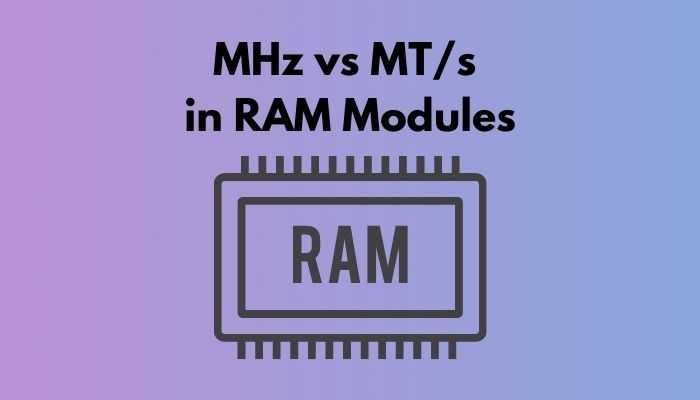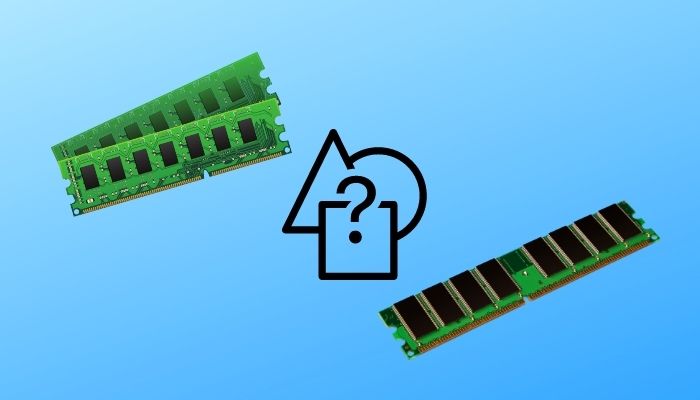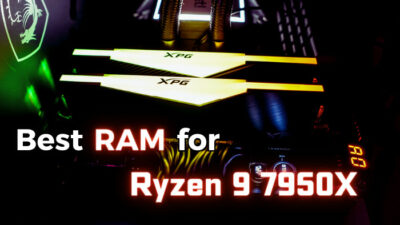Have you ever been bothered after seeing a company advertise their RAM operating at a particular MHz, but the next time they announce their RAM operating at a certain MT/s?
Don’t worry. I have been confused for a long time as I wasn’t tech-savvy before. But with time and in need, I became one, and now I know the technical and non-technical terms of MHz and MT/s.

So, what is MHz vs MT/s in the RAM modules?
If you become more confused by now, trust me, it’s alright. I will explain everything, including MHz and MT/s, to wipe out all of your confusion.
Is MHz the same as MT/s?
If you really want to get the differences between MHz and MT/s, you have to understand SDR SDRAM, DDR memory, and some physics.
SDRAM means Synchronous Dynamic Random Access Memory. An SDR SDRAM known as a (Single Data Rate SDRAM) can’t produce more than one operation per second, while a DDR (Double Data Rate) memory can operate at multiple cycles per second. So, the DDR memory has enhanced the speed of operations.
Figure: Time-Amplitude curve
If you have a Science background, you might be familiar with the curve. But if not, don’t worry, you’ll get there soon.
In the time-amplitude diagram, you can see one wavelength consisting of a crest and a trough, i.e., a rising edge and a falling edge. Here, one wavelength is considered a cycle.
The rate at which the current changes its direction per second is known as frequency, and the unit of frequency is known as Hz (Hertz), where one hertz is exactly equal to one cycle.
Our basics are done. Let’s understand the differences between MT/s and MHz.
In earlier generations of memory, we had SDR (Single Data Rate) memory which helps data transmit only once every clock cycle. But modern DDR memory can transmit data twice per cycle, one at a rising edge and one at a falling edge.
A 16 GB DDR4 2666 MT/s stick of RAM operates at a base speed of 1333 MHz. As it completes two operations per cycle, it acts like its frequency is 2600 MHz (universal unit for frequency).
But it is technically incorrect as MT/s represents the actual number of data transfer operations. Hence, the memory stick is listed as 2666 MT/s.
So, that’s where manufacturers play this mind game with us. They advertise an internal clock speed of 1333 MHz DDR4 memory as 2666 MHz when it should actually be 2666MT/s.
To know more, check out our complete article on RAM frequency.
You should also know about CAS latency which is the time it takes for the memory module to access the data in RAM.
What is the Difference between SDRAM, DDR1, DDR2, DDR3, and DDR4?
SDRAM is the older type of memory. It allows the memory controller to know the time of the completeness of the requested data so that the CPU does not have to wait for the time between accessing memory.
It allows the data to transfer on every cycle completed, i.e., consisting of a rising and falling edge. For instance, PC100 runs at 100 MT/s, PC133 runs at 133 MT/s. The prefetch buffer of SDRAM is 1 bit.
DDR/DDR1 is the next generation of SDRAM. When a rising edge comes, data transfer is made, and a second-time data transfer is made when the falling edge comes. So, it doubles the transfer rate under a frequency. The prefetch buffer is 2 bit. DDR memory is at the internal clock speed of 133~200 MHz, where the transfer rate is 266~400 MT/s.
The primary difference between DDR and DDR2 is the bus signal. DDR2 has twice the capability of operating the external data bus than DDR. So, while the internal clock speed of DDR2 is as same as the DDR, the data transfer rate is double. For example, the internal clock speed is 133~200 MHz, and the data transfer rate is 533~800.
The difference between DDR3 and DDR2 is mainly the power consumption. There is a 40% power consumption in the DDR3 with respect to DDR2. So, the data transfer rate is doubled compared to DDR2.
DDR4 is the latest model of all DDR SDRAMs. It provides the lowest operating voltage and the highest transfer rate. The prefetch buffer is 8 bit. It has additional functions, such as CRC, CA parity, and more.
Let’s take a look at the table to know all the technical differences between SDRAM, DDR1, DDR2, DDR3, and DDR4.
| Categories of SDRAM | Internal Rate (MHz) | Bus clock (MHz) | Data Rate (MT/s) | Transfer rate (GB/s) | Voltage (V) | Prefetch Buffer |
|---|---|---|---|---|---|---|
| SDRAM | 100-166 | 100-166 | 100-166 | 0.8-1.3 | 3.3 | 1 bit |
| DDR/ DDR1 SDRAM | 133-200 | 133-200 | 266-400 | 2.1-3.2 | 2.5/2.6 | 2 bit |
| DDR2 SDRAM | 133-200 | 266-400 | 533-800 | 4.2-6.4 | 1.8 | 4 bit |
| DDR3 SDRAM | 133-200 | 533-800 | 1066-1600 | 8.5-14.9 | 1.35/1.5 | 8 bit |
| DDR4 SDRAM | 133-200 | 1066-1600 | 2133-3200 | 17-21.3 | 1.2 | 8 bit |
Conclusion
There is a thin yet significant difference between MHz and MT/s. If you don’t understand it perfectly, I suggest you take a further look at the second portion of this article. I hope you understand the deception of the manufacturing companies.
If you have further questions, do write them in the comment section.





I understand all , but I need
chart of deference between MT/MHz
Hello isra, Thank you for your valuable feedback. We will update our information ASAP.